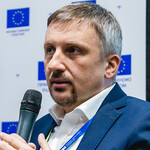Plans, Funding, Territories — People! How to create Ukraine Plan that will be backed by EU’s 50 billion.
In Lieu of an Introduction
"No plans without funding, no funding without plans" – this slogan is becoming popular among Ukrainian officials. Initially introduced in the Ministry of Regional Development in 2014, it is echoed in the newly formed Ministry of Infrastructure, which now oversees regional development, local self-government, and administrative territorial organisation. While many may wonder about the origin of this slogan, its appearance is not coincidental.
It is intricately linked to Ukraine's endeavour to adopt European approaches in state regional policy and utilise European models of development planning. In the European Union, clarity, strategy, and coherence prevail: when formulating a strategy or plan, a crucial prerequisite is determining the guaranteed amounts of funding. Simply put, there can be no plan without sufficient funding, and public funds are not allocated without a designated plan for their use.
Regrettably for Ukraine, it has been and remains an elusive dream. We prepare strategies, programmes, and plans without guaranteed funding. We form project selection commissions, define project structures, and establish performance indicators – almost mirroring the practices of the EU. And then... a decision is made to finance something else. Another someone’s “wish”. It's a strange situation. No funds for the plan, yet funding allocation for these “wishes”. But soon, this practice will come to an end. As the saying goes, every misfortune also presents an opportunity. The key is to identify it and not let it slip away.
A New Opportunity
The European Union (EU) announced on June 20, 2023, the creation of the "Ukraine Facility" – a legislative regulation aimed at providing assistance to Ukraine for its recovery and implementation of pre-accession measures towards EU membership. The price tag for this initiative amounts to 50 billion euros by 2027.
While several publications have already discussed specific principles and requirements for Ukraine to obtain such significant resources, we will now focus on often overlooked dimension.
Thousands of kilometres of roads, hundreds of bridges, or millions of square meters hardly hold any significance for individuals like Maria or Vasyl living in Sumska, Khersonska, or Ivano-Frankivska oblasts. The implementation of such an ambitious Facility, with substantial financial support, must be squarely directed towards citizens, towards Ukrainians residing in various regions and settlements across the country. Therefore, we are faced with an arduous yet incredibly crucial task of planning and making use of these billions of euros across specific projects (not mere objects) that align with the interests of individual citizens in their respective regions.
In essence, receiving 50 billion euros by Ukraine over a span of four years provides an opportunity to finally have "plans with funding." The key is to stay level-headed and not forget about the people and the territories. To achieve this, we must work and plan within the paradigm of European Cohesion Policy, which stands as a key investment policy of the EU and should become a pivotal policy for finally decentralised Ukraine. After all, it is the lack of cohesion within the Ukrainian space that created an illusion in Russia for possibility of a swift takeover of Ukraine.
The territorial approach must be put in the foundation of planning
In the Treaty on the Functioning of the European Union, there is a key article that defines approaches to Cohesion Policy and emphasizes the importance of a territorial approach to planning.
Article 174 states the following: “In order to promote its overall harmonious development, the Union shall develop and pursue its actions leading to the strengthening of its economic, social and territorial cohesion. In particular, the Union shall aim at reducing disparities between the levels of development of the various regions and the backwardness of the least favoured regions. Among the regions concerned, particular attention shall be paid to rural areas, areas affected by industrial transition, and regions which suffer from severe and permanent natural or demographic handicaps such as the northernmost regions with very low population density and island, cross-border and mountain regions.”
If we carefully analyse this article of the Treaty and project it onto the Ukrainian reality, we will see that it is precisely what we need:
Firstly, "strengthening its economic, social, and territorial cohesion". Prior to the war, both within Ukraine and beyond its borders, maps highlighting socio-economic disparities across regions were published, drawing attention to the existing fault lines between them. Dominant languages, dominant churches, distinct local heroes, and separate regional histories contributed to the fragmentation of the country, exacerbated by limited communication between regions. Now, fostering interregional convergence and cohesion becomes part of our domestic policy, aligning it with the EU’s approach.
Secondly, "reducing disparities between the levels of development of the various regions and the backwardness of the least favoured regions". This objective holds utmost relevance for our state's regional policy. Prior to the war, the developmental asymmetry between Ukrainian regions gradually increased (though European policies aim to reduce such asymmetries), with a particularly noticeable divide when compared to Kyiv. The ongoing war has significantly crippled regional economies, likely exacerbating the gap between Kyiv and other regions even further. De-industrialisation and de-urbanization have plagued substantial territories, that have been practically ruined, while a substantial portion of productive forces have relocated from highly urbanized eastern areas to moderately urbanized central and western territories.
Thirdly, "particular attention shall be paid to rural areas, areas affected by industrial transition, and regions which suffer from severe and permanent natural or demographic handicaps such as the northernmost regions with very low population density and island, cross-border and mountain regions." This formula precisely defines the criteria for identifying territories in need of special attention from the state. Our legislation (the Law of Ukraine “On the Foundations of State Regional Policy”) already defines the concept of a "functional area," which essentially encompasses all these types of European territories, except for northernmost regions. However, we have a category of border territories with Russia and Belarus, where the threat of aggression remains constant, and population density has further diminished following the aggression.
A more detailed examination of Article 174 of the Treaty on the Functioning of the European Union enables a clearer understanding of the requirements imposed on Ukraine regarding the Plan, as derived from the aforementioned Ukraine Facility.
Ukraine Plan
Here, everything is as specific as possible.
- The European Union, in its draft document on the Facility, emphasizes that "Ukraine should prepare the Plan as a coherent, comprehensive and adequately balanced response to rebuilding and modernising Ukraine, supporting its economic, social and environmental recovery and its progress towards accession to the Union." In essence, this entails a highly comprehensive document that addresses two components: recovery/reconstruction, dealing with the aftermath of the war, and modernisation/development, accelerating progress for Ukraine’s EU integration to become a Member State.
- The Plan must be highly detailed, as the allocation of funds will be tied to specific objectives. "The Ukraine Plan should include reform and investment measures, along with the qualitative and quantitative steps that warrant satisfactory fulfilment of those measures, and an indicative timetable for the implementation of those measures”. “Assistance under the Facility shall be implemented by work programmes”, providing the flexibility to address the challenges of recovery and development across different types of territories through individual programmes.
- The execution of the Plan's tasks/measures directly determines receiving or not receiving of the planned funds from the EU: "Payments will occur according to a fixed quarterly schedule, based on payment requests submitted by Ukraine and following verification by the Commission of the fulfilment of the relevant conditionalities. In case a conditionality is not fulfilled, the Commission will deduct a corresponding amount from the payment".
As evident from the Ukraine Facility document citations, preparing such a Plan will pose for Ukraine a significant challenge due to its scope and specificity. Recognizing that there is constant time pressure for developing such plans, the temptation may arise for the government to adopt an approach that is sectoral and top-down, with each ministry working independently – on energy, transportation, education, etc., giving no consideration to functional areas. However, the Europeans have issued another serious warning, emphasizing the need to ensure territorial orientation in the Plan:
"The preparation and implementation by Ukraine of the Plan should take particular account of the situation in Ukraine’s regions and municipalities, having regard to their specific needs for recovery and reconstruction, reform, modernisation and decentralisation, and should be done in consultation with regional, local, urban and other public authorities, in accordance with the multi-level governance principle and taking into account a bottom-up approach. In this context, the Plan should in particular enhance the economic, social, environmental and territorial development of Ukraine’s regions and municipalities, support the decentralisation reform across Ukraine and convergence towards the Union’s standards; it should also ensure the involvement of sub-national authorities, in particular municipalities, in decision-making on the use of support in the reconstruction process at local level, and that the reconstruction projects selected and implemented by such sub-national authorities constitute an adequately substantial share of the support”.
In this regard, in paragraph 2 of Article 3, which defines the "Objectives of the Ukraine Facility", there is an additional point that relates to this specific objective: "(f) support decentralisation and local development".
Interim Conclusions
- The European Union has taken a significant step toward the recovery, development, and integration of Ukraine into the EU.
- The Ukraine Facility envisions the creation of a comprehensive Plan by Ukraine, which should include the necessary measures for recovery, reform, and development of the country, with a specific focus on the integrated territorial development for the benefit of their residents.
- The preparation of the Plan should be based on an understanding of the situation in regions and territorial communities, taking into account the place-based approach when determining sectoral policies.
- The process of preparing and implementing the Plan should involve the active participation of various regional and local stakeholders, territorial communities, associations of local self-government, civil society groups and the general public.
- The Plan must be realistic and well-calculated in terms of the required funding and indicators that confirm the achievement of planned objectives. The cost of mistakes would be the loss of billions of euros and a hindrance to full integration into the EU due to the inability to effectively plan, finance, and implement development projects for the country.
What does Ukraine need to do now, first and foremost?
First, it is crucial to establish a dedicated team responsible for developing the Plan. Merely distributing the task among various ministries (which has been the usual practice) will result in a disjointed collection of proposals that cannot be seamlessly stitched together into a cohesive document. Instead, a core team should be formed to define the document's structure and issue clear directives to central executive authorities, relevant bodies, and key institutions outside of government. It is imperative that this team includes representatives from the EU with the appropriate mandate.
Second, it is crucial to acknowledge that sectoral strategies, when not tied to specific territories, cannot serve as the foundation for effective planning. Every decision and policy must be meticulously analysed from the perspective of its territorial impact – how it addresses the issues faced by residents and contributes to the economic growth of local communities and regions.
Third, Ukraine should adopt a regional policy approach, treating it as a comprehensive policy that caters to the unique needs of different regions and specific types of territories, as stipulated in Article 174 of the Treaty on the Functioning of the European Union. Accordingly, the list of functional areas should be refined, and defining characteristics for different functional areas, as outlined in the Law "On the Foundations of State Regional Policy," should be established. Furthermore, the necessary government acts derived from this law must be adopted, and adjustments should be made to the State Strategy for Regional Development to align with the Plan.
Fourth, it is essential to acknowledge that the regional landscape in Ukraine has undergone significant changes due to Russian aggression, particularly concerning the location of productive forces. New macro-regions have emerged, each with distinct development possibilities determined by varying security risks.
Fifth, it is imperative to agree that Ukrainian decentralisation has demonstrated its effectiveness during times of war and should not be rolled back. However, depending on the territorial communities' classification into specific types of territories, which are located in high-security risk areas and have experienced severe population decline, extensive infrastructure destruction, and local economic setbacks, these communities should be subject to different budgeting rules and receive distinct financial and institutional support compared to other territories.
Sixth, in the development of the Plan, particularly during the initial and final stages, transparency should be the priority, involving representatives from territorial communities, associations, independent Ukrainian and foreign experts and consultants, as well as civil society organisations.
Seventh, since implementing the Plan will require specialised knowledge and a shared understanding of funding and reporting procedures, it is necessary to develop methodological guidelines on these matters in cooperation with relevant EU bodies. Additionally, training programmes should be organised for officials responsible for implementing the Plan, with a particular focus on investment tasks.
Is it an easy undertaking? No. Is it achievable? Yes. Immediate action is imperative.
Please select it with the mouse and press Ctrl+Enter or Submit a bug














 Login with Google
Login with Google